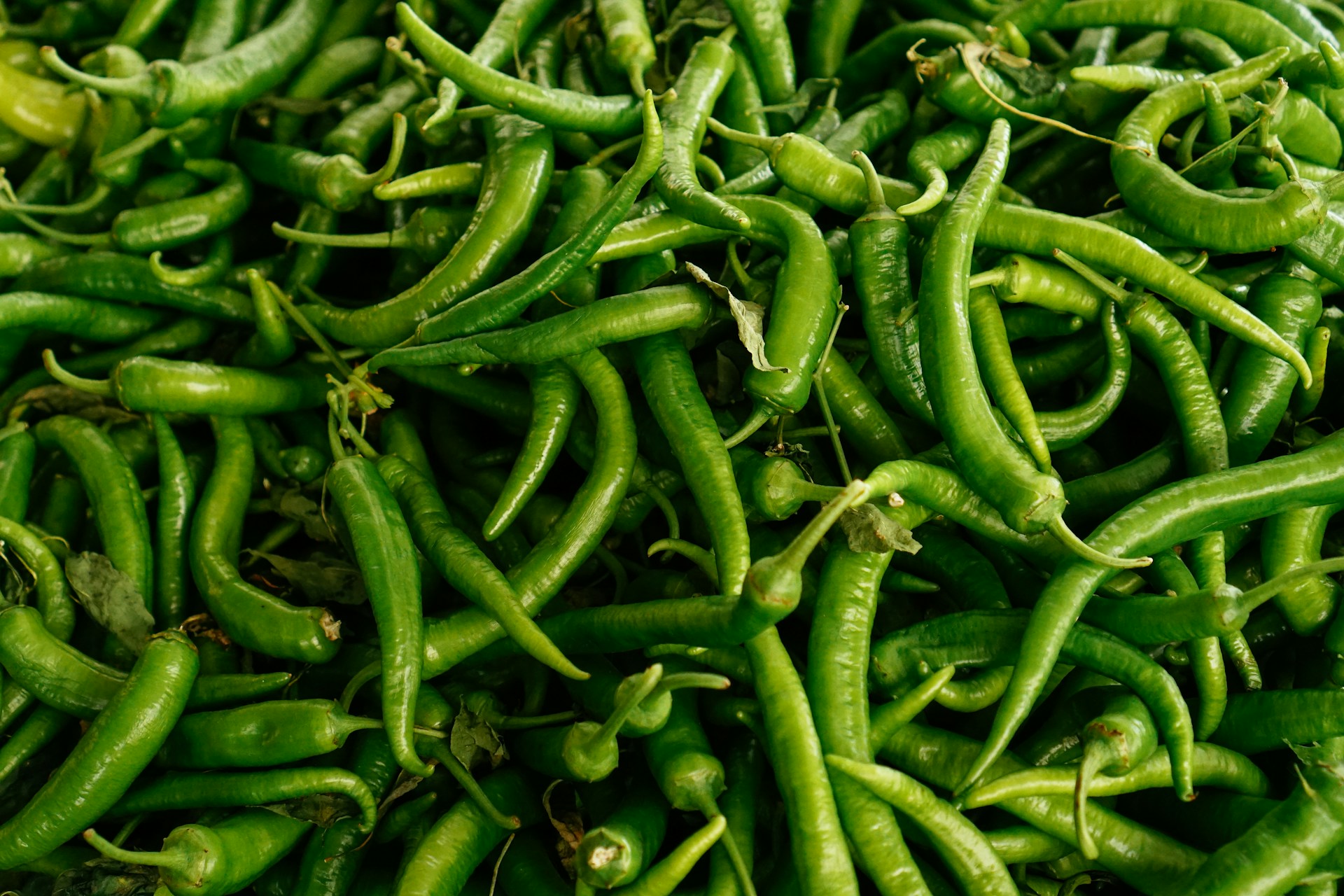As one navigates the world of produce distribution, precision, and accuracy in predicting demand, supply, and potential disruptions are critical.
Leveraging data analysis methods can significantly enhance these forecasting capabilities.
This integrated approach is essential for maintaining an efficient, optimized, and most importantly, profitable distribution network.
Traditional forecasting methods, although still relevant, can be largely improved through the proper application of data analytics.
The results bring about major changes: reduced waste, increased efficiency, and advanced ahead-of-time planning.
In this discussion, we turn our focus to exploring these innovative data analysis techniques and how they can be utilized within the field of produce distribution.
Contents
- Data Analysis Methods To Improve Forecasting In Produce Distribution
- 1. Conducting Historical Sales Trend Analysis
- 2. Implementing real-time inventory tracking
- 3. Using Seasonal Demand Forecasting
- 4. Utilizing predictive analytics tools
- 5. Implementing Advanced Statistical Models
- 6. Assessing Supplier Performance Data
- 7. Incorporating Weather Forecast Data
- 8. Using Machine Learning Algorithms
- 9. Deploying Demand Sensing Technology
- 10. Applying Artificial Intelligence in Forecasting
- The Bottom Line
Data Analysis Methods To Improve Forecasting In Produce Distribution
1. Conducting Historical Sales Trend Analysis
The first method to improve forecasting in produce distribution is by conducting historical sales trend analysis.
This involves analyzing past sales data to understand the underlying trends and patterns in a product’s sales growth.
This type of analysis is an essential tool in predicting future sales and distribution needs based on historical data, which in turn, guides the planning process.
It helps to provide a realistic picture of what the future might hold if the current trends continue.
Historical sales trend analysis can indicate whether the demand for a product is on the rise, declining, steady or cyclical.
This is immensely beneficial for businesses as they can adjust their marketing strategies, production, and distribution plans accordingly.
Moreover, analyzing historical sales data also sheds light on how seasonal trends affect the sales of a specific product.
For instance, the demand for certain vegetables or fruits might increase or decrease based on the season or during specific festivals or holidays.
By analyzing these seasonal trends, businesses can better prepare for these periods and adjust their produce distribution plans to match the anticipated demand.
In the era of big data and data analytics, historical sales trend analysis is no longer a time-consuming and labor-intensive process.
With the help of modern data analytic tools, businesses can now gather, process and analyze large volumes of data in a relatively short time.
This not only increases the efficiency of the analysis but also the accuracy and integrity of the results.
Therefore, historic sales trend analysis is an essential method in improving forecasting in produce distribution.
It equips a business with the necessary information to anticipate changes in the market and formulate strategies accordingly.
By understanding what has happened in the past, businesses can make informed decisions about the future, thereby ensuring a smooth and successful operation of their produce distribution process.
Undeniably, the key to effective forecasting lies in a business’s ability to accurately assess its historical sales data and identify evolving trends within that data.
As such, any business within the produce distribution sector should consider embracing historical sales trend analysis in efforts to improve their forecasting.
2. Implementing real-time inventory tracking
There lies a considerable value in implementing and utilizing real-time inventory tracking within the produce distribution business.
Real-time inventory tracking refers to the ability to view the exact quantity and location of each product within your inventory at any given moment.
This system works by constantly updating inventory levels as products are received, sold, or transferred, thereby providing a live snapshot of your inventory state.
Real-time inventory tracking provides a new level of visibility, enabling businesses to make informed decisions and respond swiftly to changes.
Businesses, specifically those in the produce distribution industry, can benefit from real-time inventory tracking in two primary ways: reducing waste and improving customer satisfaction.
Fresh produce has a limited shelf life, and any inefficiency in the distribution process can lead to significant waste and lost revenue.
With real-time inventory tracking, businesses can instantly know which produce items are nearing their expiration date, enabling them to prioritize those items for distribution.
This, in turn, can reduce waste and optimize the use of resources, including storage space.
Furthermore, real-time inventory tracking can significantly improve customer satisfaction.
With an up-to-date digital record of your inventory, businesses can better manage customer expectations by accurately informing them about product availability and delivery times.
This accuracy can enhance the customer experience and potentially lead to repeat business in the future.
The benefits of real-time inventory tracking are vast, making it an increasingly indispensable tool in today’s digitally driven world.
Implementing real-time inventory tracking, however, requires the adoption of advanced technology, including inventory management software, barcoding systems, and other digital tools.
This advanced technology will effectively and efficiently make tracking the status and location of every single piece of inventory possible.
Overall, businesses that have successfully implemented real-time inventory tracking are more competitive and adaptable, ready to meet the challenges of a volatile and fast-paced industry.
3. Using Seasonal Demand Forecasting
When it comes to optimizing the efficiency of produce distribution, seasonal demand forecasting is an effective data analysis method worth exploring.
Unlike steady consumer products, the supply and demand of agricultural goods are highly subject to seasonal variations.
Understanding these variances allows businesses to make informed decisions to improve their forecasting accuracy.
Historic sales data can provide insights into the fluctuating consumer demand patterns for different produce during various seasons.
These patterns, when incorporated into the distribution process, improve the quality and efficiency of supply chains.
Seasonal demand forecasting enables businesses to anticipate the consumer demand for specific agricultural produce at various time intervals throughout the year.
This not only allows for efficient inventory management but also facilitates the planning of production cycles.
By nailing down quantities required for different periods, wastage can be greatly reduced and profit margins increased.
The data-driven forecasts produced from this method enable distributors to focus on the delivery of high-demand vegetables and fruits during their peak seasons.
This ensures there is enough produce to meet the demand at any given time, and prevents over-stocking that can lead to unnecessary losses due to spoilage.
It is also noteworthy that the use of seasonal demand forecasting contributes to maintaining the consistency of the quality of produce delivered to consumers.
With accurate demand forecasts, distributors can work with farmers to ensure that crops are grown and harvested at optimum times, thereby maintaining optimal fruit and vegetable quality.
As more sophisticated forecasting models are developed, more granular predictions about the demand for individual types of produce are possible.
This allows for even more precise planning and fulfillment of consumer expectations.
However, for the successful implementation of this forecasting model, it is crucial to have the right technology tools for accurate data analysis.
The deep insights gained from seasonal demand forecasting are beneficial in making strategic decisions and positioning businesses for success in the highly volatile produce market.
4. Utilizing predictive analytics tools
In the world of produce distribution, leveraging predictive analytics tools is crucial for enhancing forecasting accuracy.
These tools employ sophisticated algorithms, historical data, and machine learning techniques to predict future outcomes based on input data.
They allow for a better understanding of sales trends, customer behavior, and prevailing market conditions, thus enabling optimal decision-making.
Predictive analytics can aid in demand forecasting by taking into consideration various relevant factors such as seasonality, market trends, and promotional activities.
Through data mining, statistical modeling, and machine learning, predictive analytics tools can significantly reduce uncertainty and effectively predict demand.
The accuracy of these predictions proves beneficial in managing inventory levels and ensuring efficient supply chain operations.
In produce distribution, where products have a short shelf life, optimizing inventory levels is of quintessential importance.
Predictive analytics tools facilitate this by providing precise forecasts, thereby minimizing waste and maximizing profits.
These tools not only assist in managing operations but also help in strategic planning.
They can identify potential growth areas, evaluate business strategies, and highlight areas for improvement.
However, it is important to note that the effectiveness of predictive analytics tools largely depends on the quality of the data used.
Poorly managed or inaccurate data can lead to erroneous predictions, thereby affecting operational efficiency.
Therefore, it is imperative to ensure data cleanliness, accurate data input, and regular data updates.
Incorporating predictive analytics tools within a data-driven culture and decision-making process enhances the ability to make proactive decisions, foresee risks, and identify opportunities.
Through this, produce distribution businesses can improve forecasting, optimize operations, and ensure sustained growth in an increasingly competitive market.
5. Implementing Advanced Statistical Models
The use of advanced statistical models has become integral in improving forecasting capacities in the distribution of produce.
These methods harness the power of mathematical and computational techniques to analyse vast amounts of data and draw insights that can drive actionable decisions.
Statistical models such as regression analysis, time series analysis, and multivariate analysis are some of the most commonly used methods in this context.
For instance, regression analysis is used to identify the relationship between different variables, such as sales and weather patterns, to create a model that can independently predict future outcomes.
Time series analysis, on the other hand, leverages past data trends to forecast future trends, an aspect very critical in informing procurement, production, and distribution decisions in produce.
The multivariate analysis incorporates multiple variables at once to create more accurate models.
By implementing these advanced statistical procedures in data analysis, produce distribution businesses can anticipate consumer demand with a higher degree of precision, lower investment risks, and significantly improve their operational efficiency.
These models also allow businesses to adapt quickly to changes in the market, such as fluctuating consumer demand or disruptions in the supply chain, which can severely impact their profitability if not managed appropriately.
It’s important to note, however, that success in implementing these advanced statistical models does not only rely on the sophistication of the techniques but also on the quality and cleanliness of the data used.
Therefore, ensuring that data is free from errors, redundancies, and inaccuracies is a crucial precondition for these models to deliver accurate forecasting results.
Moreover, these models are not typically ‘one-size-fits-all’ solutions. The choice of a suitable statistical model will ultimately depend on the specific forecasting needs of the business as well as the nature, structure, and volume of data available.
For example, a business dealing in seasonal produce may rely on a combination of time series analysis and weather pattern data to predict peak demand periods.
In conclusion, implementing advanced statistical models in data analysis is a proven method to improve forecasting in produce distribution and contributes greatly to the optimization of the supply chain.
6. Assessing Supplier Performance Data
Accurate supplier performance data plays a critical role in improving forecasting in produce distribution.
This assessment helps to provide a clearer understanding of a supplier’s ability to meet demand requirements and anticipate potential obstacles in the supply chain.
Understanding a supplier’s performance data can lead to an accurate and predictive understanding of potential disruptions or opportunities in the supply chain.
Supplier performance may be influenced by a variety of factors such as the supplier’s reliability, the quality of their produce, their communication capabilities, and their responsiveness to changes in demand.
Effective supplier performance assessments require comprehensive and accurate data collection, analysis, and interpretation.
Gather supplier performance data throughout the entire engagement life cycle, not just during the negotiation or contract signing stages.
Monitoring performance over time offers insights into the supplier’s consistency and their capability to adapt to shifts in market demand.
Through rigorous analysis, any discrepancies or trends in supplier performance can be identified and leveraged to forecast supply chain adjustments accurately.
A robust evaluation of supplier performance data can also lead to improvements in relationship management, promoting more efficient collaboration, and timely information sharing between the supplier and the distributor.
Another key benefit of analyzing supplier performance data is identifying potential risks and vulnerabilities in the supply chain.
Timely identification and addressing these vulnerabilities can help ensure a steady flow of produce in response to demand, thus enhancing the forecasting process.
Using tools and methodologies such as Key Performance Indicators (KPIs), Geographic Information Systems (GIS) and Demand Driven Material Requirements Planning (DDMRP) can enhance the gathering and analysis of supplier data.
Sophisticated data analysis techniques can help translate raw numbers into actionable insights and foresights.
By embedding supplier performance data into a data-driven forecasting process, produce distributors can optimize their supply chains and ensure they are prepared to meet fluctuating demand.
In conclusion, assessing supplier performance data is a vital component of data-driven forecasting, and regular, detailed analysis can greatly enhance the accuracy and effectiveness of the produce distribution process.
7. Incorporating Weather Forecast Data
One often overlooked aspect of accurate forecasting in produce distribution is the incorporation of weather forecast data.
As agricultural products are impacted by climatic conditions, utilizing weather forecast data enhances the specificity and reliability of your prediction models.
In an era where weather prediction technology has advanced appreciably, its integration into the forecasting process has become more pertinent and accessible.
Weather forecast information can significantly improve the prediction of agricultural yield, and in turn, enhance the accuracy of produce distribution forecasts.
Naturally, different weather conditions affect crop growth differently, hence the need to consider the precise weather predictions for varying regions and seasons.
For instance, the amount of rainfall, sunlight, or temperature can significantly affect the yield of certain crops.
By analyzing this data, you can proactively adjust your distribution plans in anticipation of probable yield variations, thus avoiding overstock or understock situations.
Furthermore, severe weather conditions like drought, floods or frost can lead to complete crop failure, information that can be critical in adjusting your sourcing and distribution strategies to avoid significant losses.
It’s also worth noting that weather forecast data is publicly available and can be integrated into your existing data analysis systems with relative ease and minimal cost.
This availability also streamlines the process of constantly updating your prediction models with the newest data, ensuring your forecasts remain as current and accurate as possible.
Notably, the application of weather forecast data is not confined to agricultural yield prediction only.
Understanding the weather patterns can also give you insight into consumer behavior, as the demand for certain products may rise or fall depending on the season or prevailing weather conditions.
Thus incorporating weather forecast data serves a dual purpose in improving the accuracy and reliability of both your supply and demand forecasting models.
As the impact of climate change becomes more evident, the use of weather forecast data in forecasting models will likely become a standard practice in the produce distribution industry.
Therefore, adopting this data analysis method early can give your business a competitive edge, ensuring your forecasting models are as robust and accurate as they can be, maximizing efficiency and minimizing potential losses.
8. Using Machine Learning Algorithms
Machine learning algorithms are valuable tools that can significantly enhance the accuracy of forecasting in produce distribution.
These algorithms work by automating the learning process and enabling the system to improve from experience.
This enables the tool to precisely predict demand and supply patterns based on data patterns and trends.
Machine learning can be very useful in big data analysis -it can efficiently process vast amounts of data in quick time.
Moreover, machine learning algorithms are flexible and scalable, meaning they can easily adapt to changes in the distribution chain.
Most importantly, machine learning can identify complex non-linear patterns in data that other methods may miss, enabling the production of highly accurate forecasts.
Also, with machine learning, there’s a lower risk of human error, and hence the results derived are more reliable.
The application of machine learning in produce distribution isn’t constrained by the type or size of the dataset.
These algorithms are proficient in identifying correlations and patterns in large-scale datasets that are often difficult to manually analyze.
Machine learning also helps improve decision-making processes by providing significantly accurate predictions and forecasts.
Moreover, the continuous improvement from experience makes these algorithms increasingly more accurate and reliable for forecasting.
Using machine-learning algorithms leads to more informed decisions, thus helping in producing robust supply chain strategies.
Algorithms like decision trees, random forest, and neural networks can be particularly useful in forecasting.
Machine learning techniques can also aid in inventory management by predicting the quantities that would be required in the future.
Last but not least, machine learning algorithms can create predictive models that distributors can utilize to improve their supply chain processes.
Overall, integrating machine learning algorithms into produce distribution can lead to a significant improvement in the accuracy of forecasts and a consequent increase in efficiency and effectiveness of the distribution processes.
9. Deploying Demand Sensing Technology
Demand sensing technology is an essential tool in improving forecasting accuracy in produce distribution.
This kind of technology monitors real-time data about sales and other relevant factors, enabling distributors to adjust to market fluctuations swiftly.
Unlike traditional forecast methods that primarily rely on historical sales data, demand sensing contributes to a more immediate and accurate forecast.
Demand sensing technology synthesizes data from a multitude of sources, making it possible for distributors to execute quick changes based on real-time signals.
For instance, this can be extraordinarily beneficial in situations where a selected produce item becomes popular overnight, causing an abrupt spike in demand.
This technology equips distributors with the capacity to respond efficiently to sudden shifts in consumer behavior or preferences.
Furthermore, demand sensing can be a powerful tool against waste in the supply chain.
A more accurate forecast means the risk of having surplus stock that eventually goes to waste is greatly minimized.
This not only decreases losses for distributors but also contributes to a more sustainable supply chain by curtailing food waste.
Another crucial advantage of demand sensing technology is its potential to optimize inventory.
If a distributor can accurately anticipate when a product’s demand may increase or decline based on real-time data, it can manage its inventory more effectively.
This management reduces the likelihood of shortages and surpluses, leading to better customer satisfaction and more efficient operations.
Demand sensing technology can also be integrated with other data analysis methods to further improve forecasting accuracy.
Existing tools like predictive analytics, machine learning, and artificial intelligence can work in tandem with demand sensing.
These technologies combine to provide the most accurate predictions possible of what customers will want and when they will want it.
Overall, demand sensing offers clear benefits in terms of reducing waste and improving operation efficiency.
To conclude, the integration and deployment of demand sensing technology is a significant step in improving forecasting in the produce distribution sector.
10. Applying Artificial Intelligence in Forecasting
The advent of Artificial Intelligence (AI) has revolutionized many industries, with produce distribution not being left out.
In produce distribution, AI can significantly enhance forecasting, which is crucial in improving efficiency and profitability.
Today, many businesses leverage AI-driven forecasting models to predict and deliver optimal results.
In the sphere of produce delivery, these models assist in forecasting demand, pricing, and other elements affecting supply chain.
Such accuracy in forecasting helps to curb food waste – an issue businesses in the produce distribution industry often face due to the perishable nature of their products.
AI algorithms identify patterns and trends from large data sets faster and more accurately than traditional forecasting methods.
AI-powered analytics enhances predictive power by incorporating various data sources, including historical sales data, real-time inventory tracking, supplier performance data, and even the impact of weather conditions, in its analysis.
The application of AI in forecasting offers a significant competitive advantage, as it not only improves accuracy but also allows for real-time adjustments, which can aid in preventing potential losses.
It is crucial that the data feeding these AI models are clean, accurate, and up-to-date, as faulty or obsolete data can lead to erroneous predictions.
Therefore, an essential step in applying AI in produce distribution forecasting is ensuring quality data management, as data integrity is a pillar of successful AI implementation.
AI usage in forecasting also has implications on workforce requirements in produce distribution; it often streamlines processes, reducing the need for extensive manpower and thus lowering costs.
Nonetheless, it’s important to note that while AI offers significant benefits, it isn’t a silver bullet that will magically solve all forecasting challenges in produce distribution.
Despite its capabilities, the success of AI largely depends on how well it’s integrated into existing systems and processes, and how effectively the output is interpreted and used.
Therefore, businesses must obtain a deep understanding of AI tools and methodologies, as well as insights into their data, to yield the maximum benefits from AI implementation in forecasting.
Overall, AI-driven forecasting is a powerful tool against the inherent uncertainties of the produce distribution industry, offering robust, efficient, and accurate predictions that can considerably improve business performance.
The Bottom Line
Adopting advanced technology and data analytics can dramatically enhance stock management practices.
Historical sale trends, real-time inventory tracking, and seasonal demand forecasting provide necessary insights into customer buying behaviors which aids in optimizing inventory levels.
Similarly, the use of predictive analytics, advanced statistical models, and machine learning algorithms offer precise forecasting solutions that can mitigate risks related to overstock or stock-outs.
Supplier performance data, weather forecast data, and demand sensing technology also play integral roles in comprehensive forecasting.
Furthermore, the innovative integration of Artificial Intelligence can offer game-changing potential in forecasting, making it a crucial inclusion.
By adapting these measures, businesses can not only improve their inventory management but also achieve significant gains in operational efficiency and customer satisfaction.




